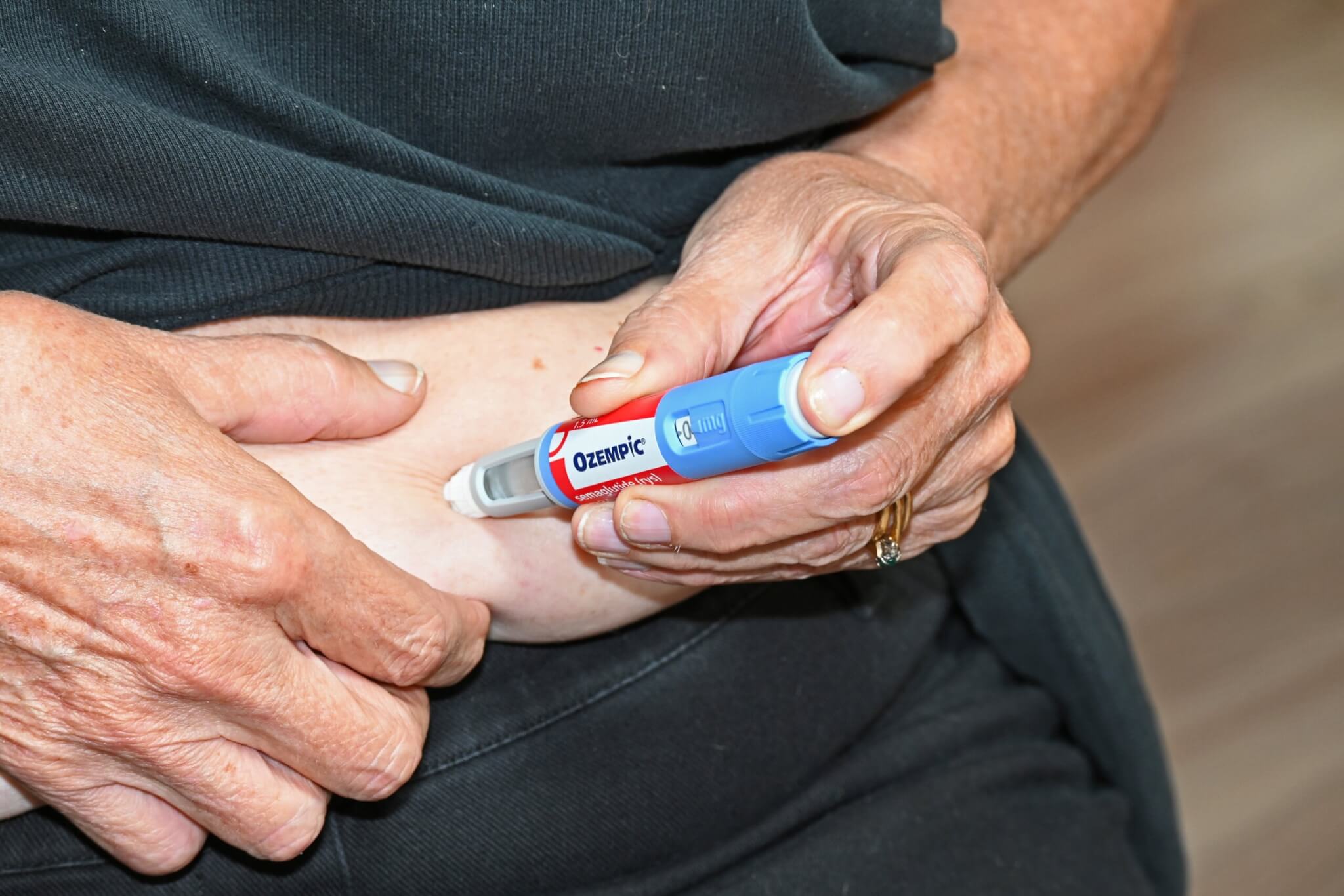MURCIA, Spain — In the ongoing battle against obesity, a new study has harnessed the power of artificial intelligence (AI) to identify two promising plant compounds that could potentially rival the effectiveness of current weight loss medications without some of their drawbacks.
Researchers from the Catholic University of Murcia in Spain used cutting-edge AI techniques to sift through a vast library of over 10,000 natural compounds, searching for those that could mimic the action of a hormone called GLP-1. This hormone, short for glucagon-like peptide-1, is the target of popular weight loss drugs like semaglutide and tirzepatide.
These medications, known as GLP-1 receptor agonists, work by binding to and activating the GLP-1 receptor in cells. This action suppresses appetite, slows the emptying of the stomach, and enhances feelings of fullness after meals – all of which contribute to weight loss. However, as study author Elena Murcia explains, current GLP-1 agonists come with some baggage.
“Although the effectiveness of current GLP-1 agonists has been demonstrated, there are some side-effects associated with their use – gastrointestinal issues such as nausea, vomiting, and mental health changes like anxiety and irritability,” Murcia says in a statement. “Recent data has also confirmed that when patients stop treatment they regain lost weight.”

Moreover, most existing GLP-1 agonists are peptides – short chains of amino acids that stomach enzymes can break down. This means they often need to be administered via injection rather than taken orally as a pill.
That’s where the AI comes in. By employing sophisticated virtual screening methods, the researchers narrowed down the initial pool of over 10,000 compounds to just 100 that showed the strongest binding to the GLP-1 receptor. Further computational analyses revealed that two of these, dubbed “Compound A” and “Compound B,” interacted with key amino acids on the receptor in a manner strikingly similar to two promising synthetic GLP-1 agonists, TTOAD2 and orforglipron.
Intriguingly, Compound A and Compound B are derived from very common plants, extracts of which have previously been linked to beneficial effects on human metabolism. The researchers are keeping mum on the exact identities of the plants and compounds for now, pending patent applications, but they are hopeful that both could eventually be formulated into pill form.
The two compounds are now undergoing laboratory tests to confirm their GLP-1 receptor-activating properties. If successful, they will move on to clinical trials in humans.
“We are in the early stages of developing new GLP-1 agonists derived from natural sources,” Murcia continues. “If our AI-based calculations confirmed in vitro and then in clinical trials, we will have other therapeutic options to manage obesity.”
She emphasizes the advantages of using computer-based approaches in the initial stages of drug discovery.
“Computer-based studies such as ours have key advantages, such as reductions in costs and time, rapid analysis of large data sets, flexibility in experimental design and the ability to identify and mitigate any ethical and safety risks before conducting experiments in the laboratory,” the study author explains.
“These simulations also allow us to take advantage of AI resources to analyze complex problems and so provide a valuable initial perspective in the search for new drugs.”
The findings, which will be presented at the European Congress on Obesity (ECO 2024) in Venice, Italy, represent an exciting new avenue in the quest for safer, more effective, and easier-to-administer weight loss medications.
By harnessing the power of AI to explore the vast chemical diversity of the plant kingdom, researchers may be able to unlock novel compounds that can help in the fight against obesity, without some of the limitations and side effects of current treatments.
Of course, much work remains to be done to validate these initial findings and bring any potential new drugs to market. But the study offers a tantalizing glimpse into a future where the solution to our obesity epidemic may be found not just in the lab, but in the leaves, roots, and flowers all around us – with a little help from our artificial intelligence friends.
StudyFinds’ Editor-in-Chief Steve Fink contributed to this report.
